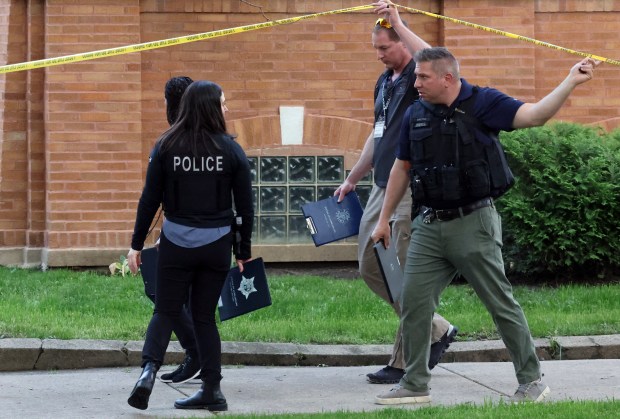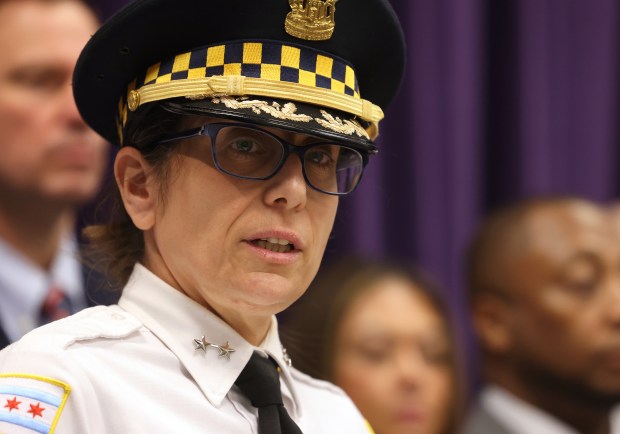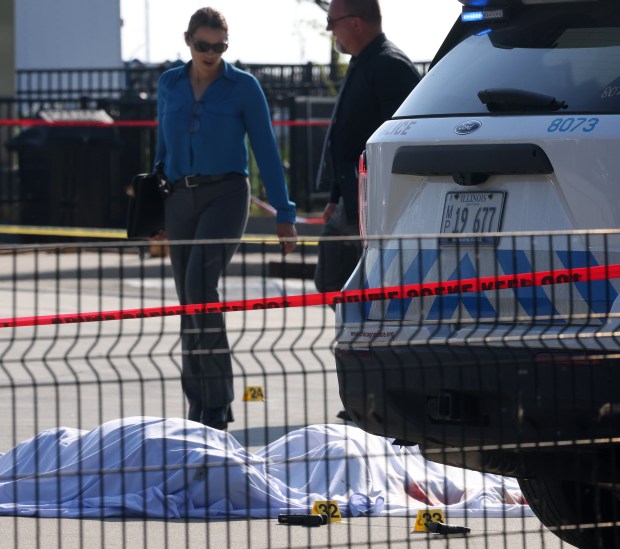Baseball was a big part of life for brothers Ronald and Gregory Tolliver. Growing up on the city’s West Side in the 1950s and 1960s, the two would often ride their bikes to play in places like Garfield Park.
“We played baseball pretty much from the time that the sun rose till the streetlights came on,” Gregory Tolliver said in a recent interview with the Tribune.
They cheered for both the White Sox and Cubs, going to night games at Comiskey Park after their father finished with work and watching Cubs day games on WGN-TV. Ronald, the fifth of eight kids, went on to play at Marshall High School. Gregory, two years younger, tried out for the team his freshman year.
“I pretty much mimicked him,” Gregory Tolliver said of his brother.
Their paths diverged as they aged, however, and his brother started associating with some “nefarious” people. “But there were times that, essentially, he was trying to turn things around for himself individually and go down a better path,” Tolliver said.
Instead, Ronald Tolliver, 28 and a father of two young children, was found shot to death April 19, 1979, in the basement of a seven-story Cabrini-Green midrise. Police records examined by the Tribune suggest Tolliver was murdered by a narcotics dealer for backing out of a robbery.
Now, 45 years later, the Tolliver killing is on a list of more than 150 homicide cases cleared by Chicago Police Department detectives in the first six months of 2024, as the department makes a renewed push to improve the rate of cases it considers solved. The Tolliver case was cleared via “death of offender,” a person known in police records only as “Paul” and who was never charged.
As part of the city’s new contract with the Fraternal Order of Police, CPD’s detective bureau restructured the schedules of homicide detectives across the city in an effort to boost the clearance rate by giving investigators more ownership of a case.
Antoinette Ursitti, CPD’s chief of detectives, said the staffing change has made “a profound effect” on the bureau. As of June 20, the department had a clearance rate of more than 65% — a marked increase from the 51.7% clearance rate the bureau recorded in 2023 and well higher than its overall clearance rate of 44% between 2012 and 2022.
“Going back over the last 10 years, this is the highest clearance rate that we’ve seen,” Ursitti said.
“It’s not just how many of these murders are we solving, but how are we solving them, and that really comes back to how we’re working with the survivors, the family members, witnesses,” Ursitti added. “The way that this structure is set, it allows for our detectives to have more flexibility once they’re assigned a case. And that looks like better engagement across the board with stakeholders, but especially with the families of individuals who’ve been killed.”
Homicides down, clearance rate up
With the hottest months of the year arriving, along with the Democratic National Convention, CPD has been vocal about moving various needles toward improvement, including both the number of homicides here and its percentage of cleared cases.
And it seems there has been at least measured success.
Through mid-June, the city had recorded 227 homicides this year, 41 fewer than in the same time frame a year earlier, according to CPD.
But the 65% clearance rate does not mean the department has solved such a healthy percentage of this year’s homicides. The clearance rate is calculated by dividing the number of cases cleared in a year by the number of cases opened in a year, which is why the Tolliver case counts in the 2024 rate.
For example, if 100 homicides occurred in a year and police cleared 50 of them during that same calendar year while also clearing 15 from previous years, the clearance rate would calculated as 65 out of 115, or 56.5%.
Among the 227 homicides to occur during the 2024 time period reviewed by the Tribune, only about three dozen had been cleared by late May.
How a case is ‘cleared’
A case can be categorized “cleared” in three ways:
If criminal charges are filed against a suspect, CPD will consider the case cleared regardless of how it’s adjudicated in court, even if the charges are later dropped or a suspect is acquitted at trial.
When prosecutors decline to bring charges after evaluating evidence presented by detectives, CPD may still consider the case cleared.
A “death of offender” clearance means that detectives believe the person responsible for a homicide is no longer living, such as in the Tolliver case.
Between January and early May 2024, CPD detectives cleared 112 total homicide investigations, according to CPD data provided to the Tribune in response to a Freedom of Information Act request. That figure includes the three dozen cases from this year that CPD considers solved as well as older cases it reopened.
A Tribune analysis found that criminal charges were brought in 52 of the 112 cases cleared by homicide detectives in the first four months of 2024. Prosecutors declined to bring charges in another 45 cases that CPD has deemed cleared. Fifteen other open homicides were cleared after detectives determined that the suspect had died.
More than half of those 112 cases did involve killings that occurred in the last two years, records show. CPD detectives this year have cleared at least 19 homicide cases more than 10 years old — Ronald Tolliver’s included — but so far none have resulted in criminal charges.
A growing number of detectives
All told, about 1,100 CPD officers are assigned to the Bureau of Detectives, according to data from the city’s Office of Inspector General. In May, Ursitti said the bureau had recently grown by 20%.
One homicide detective, speaking on condition of anonymity, said the changes to staffing have made the bureau more efficient and collaborative.
“It just gets work done way better as a team than doing it by yourself,” the detective said.
“We have that freedom to get the job done and we have a team to do it with where I trust the people I’m with,” he added. “We’re all together, so let’s get this done and get it done quick.”
Homicide investigators in each of the Police Department’s five areas are now assigned to teams of about eight detectives and a sergeant.

Each team is on call for a week, and detectives on the team will respond to any homicide in the area that occurs in that time. On-call detectives are afforded take-home vehicles and are eligible for overtime. After a week, another team is placed on call and the other teams are left to work cases.
Meanwhile, the bureau has bolstered the Family Liaison Office, staffed by nearly two dozen detectives and officers who work to provide compassionate assistance to families of homicide victims. Those 23 officers, Ursitti said, “who work across all five areas in the aftermath of a homicide to engage with the family members who have survived the death of their loved one.”
The Family Liaison Office’s officers and detectives will make contact with the families of victims in the first few days after the homicide, a time that can be especially fraught.
“We’re talking about having to go to the medical examiner, trying to get back belongings, trying to understand everything that happened. What we want these members to do is to be a supportive and direct point of contact for any questions that they have about the process,” Ursitti said.

“This does not mean that there isn’t regular contact and engagement with the assigned investigators about the case,” she said, “but we also understand that there may be frequent questions that come up in the earliest points afterwards, and we want (families) to have those questions answered as soon as possible.”
While the early returns are promising, the contract agreement between the city and FOP allows for the Police Department to discontinue the “homicide teams” structure after a yearlong pilot phase.
“Like all of our initiatives, we’re going to make sure that, like (the contract) says, we’re evaluating it,” Ursitti said, “we’re understanding both the union side as well as what we’re seeing, that it makes sense and that we’re seeing success.”





